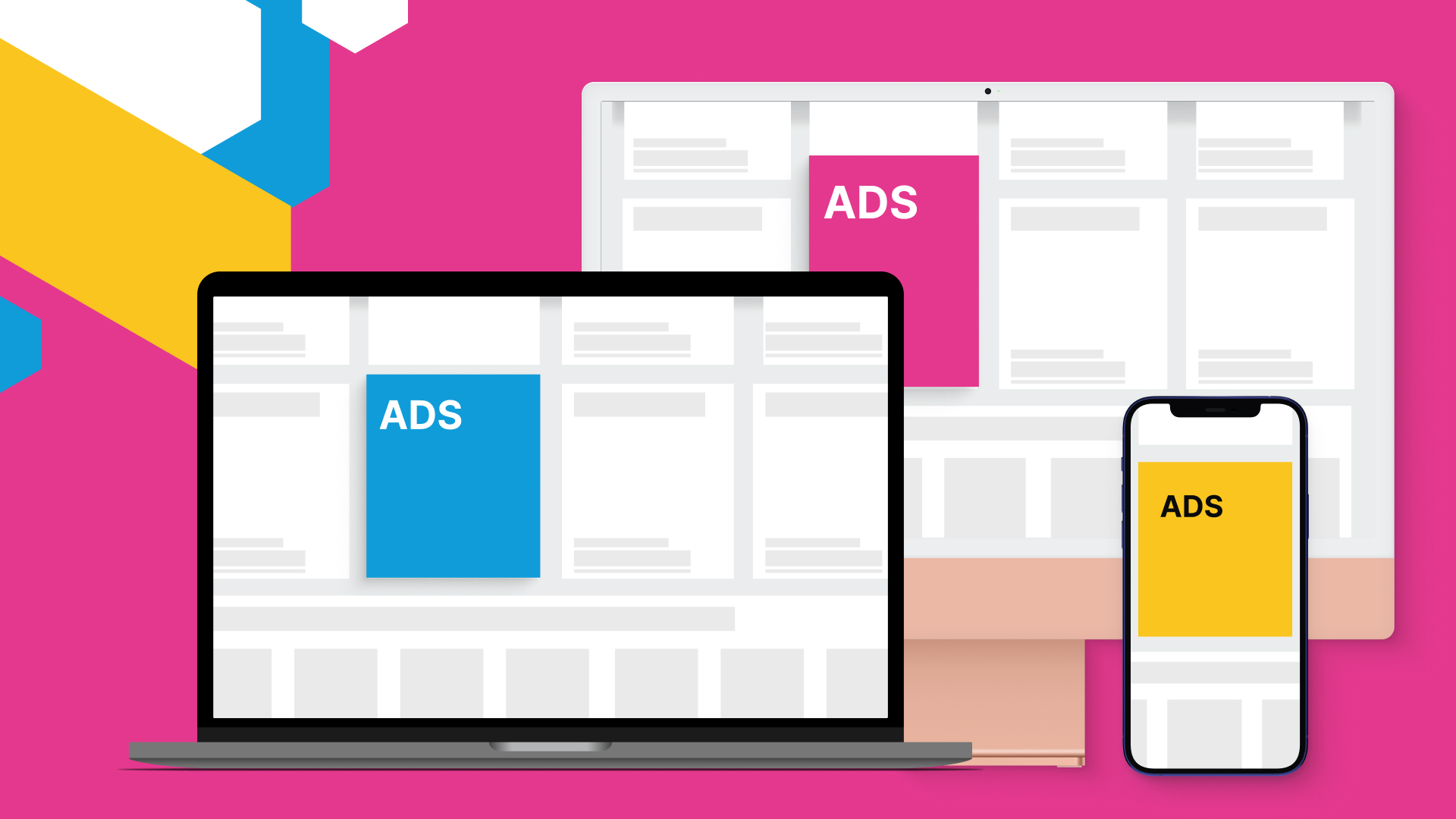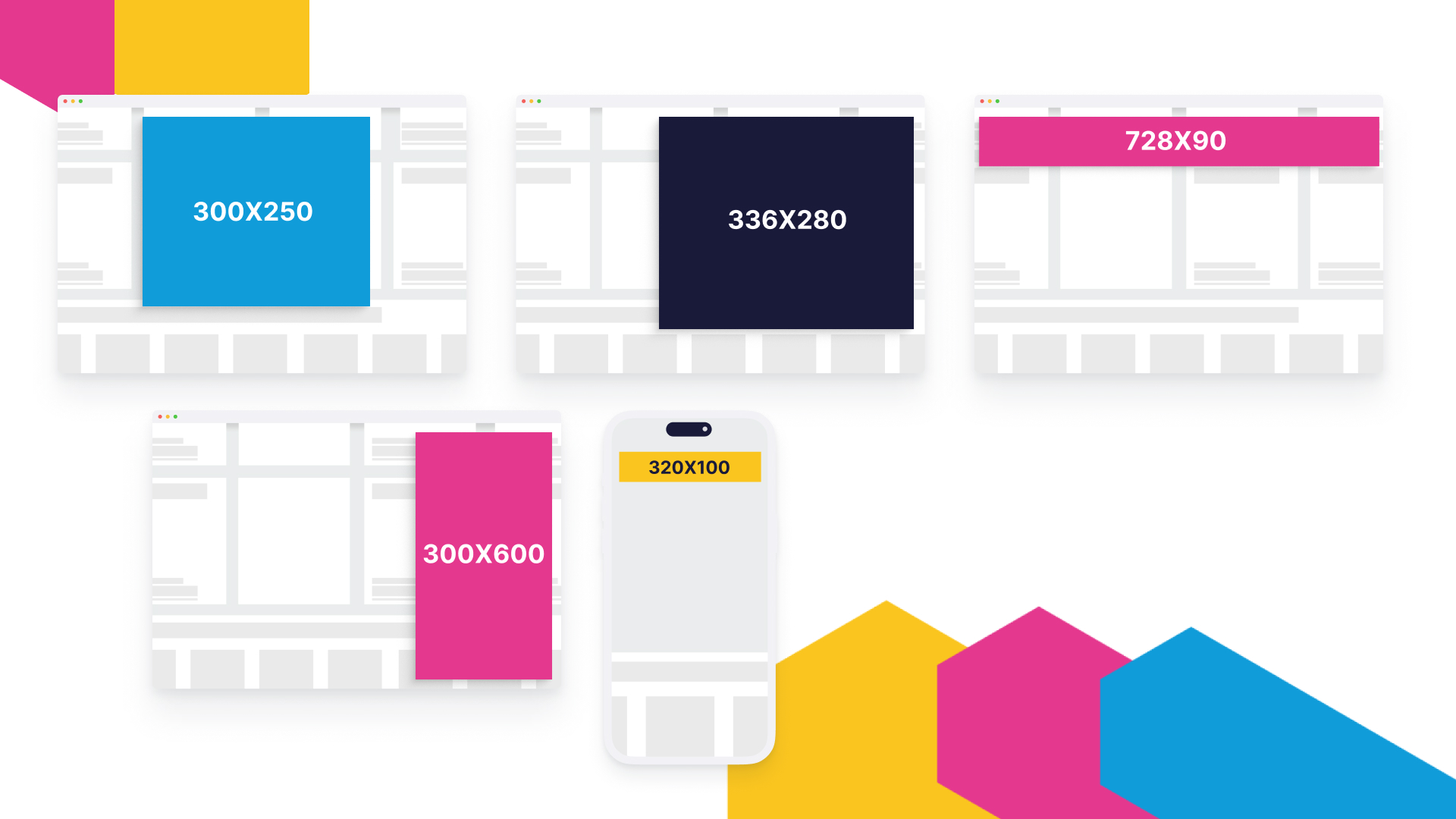7 Best Practices to Elevate your Google Display Ad Campaigns in 2024


With over 3 million websites, 650,000 apps, and Google platforms like Gmail and YouTube showcasing Google Display Ads, this ad format offers eCommerce brands a huge opportunity to increase brand awareness and connect with potential customers.
But how can you bypass banner blindness and make your Display Ads stand out from the crowd?
In this article, we’ll share the most up-to-date Google Display Ads best practices for 2024. We'll cover everything from creating the right assets to designing landing pages that convert. We'll also share some tips on how to use the automation features in Google Ads to your advantage and maximize the success of your Display advertising this year.
1. Use Responsive Display Ads
While static Display Ads have been the traditional method of creating ads for the Google Display Network, Responsive Display Ads are now the default ad format.
Responsive Display Ads allow you to upload multiple variations of ad creatives, such as images, logos, headlines, and descriptions. Google will then automatically test different combinations of these creatives to determine which ones perform best in different placements and audiences.
Even though you’ll have less creative control, Responsive Display Ads are more likely to perform better than static ads. That’s because Google's algorithm will find the best combinations of creatives for each placement. Responsive Display Ads are also easier to create and manage as Google will automatically create and optimize your ads for you based on the assets you provide.
2. Create a number of different assets
To make sure your Responsive Display Ads have a chance of succeeding, it’s important to give Google a wide selection of ad variations to work with.
That means using all available headline and description fields, including different logo formats, and, whenever feasible, leveraging all 15 image slots.
Here are some best practices for every Display Ad creative type:
Images
Images are the cornerstone of effective display ads, so it's crucial to ensure that the images you upload are high in quality. Crisp, clear images will grab attention and showcase your products in the best possible light. Make sure to avoid using blurry, excessively filtered, or color-inverted images.
It’s also important to follow Google’s image guidelines. Responsive Display Ads let you upload up to 15 images in 3 aspect ratios:
Landscape image (1.91:1)
- Recommended size: 1200 x 628
- Minimum size: 600 x 314
Square (1:1) - Recommended size: 1200 x 1200
- Minimum size: 300 x 300
Portrait (9:16) - Recommended size: 900 x 1600
- Minimum size: 600 x 1067
Finally, do not overlay any logos, text, or buttons over your images as this violates Google’s Ads policy.
Logos
If you have different versions of your logo (i.e. icon, text only, icon with text), we’d recommend uploading them to your Google Ads platform.
Make sure to upload them in the correct aspect ratio: 1:1 (e.g. 1200 x 1200 px) and 4:1 (1200 x 300 px).
Copy
The best ad copy is clear, descriptive, and benefit-driven. For your headlines, use simple text to describe your products, such as “High-performance running shoes” or “Energy-efficient smart TVs for small spaces”.
You can also include prices and promotions in your headlines to incentivize potential shoppers to click on your ads and browse your products.
Descriptions can be up to 80 characters long, so use this extra space to showcase some additional information about your products. Consider including shipping times, your return policy, and any other benefits or problems your products solve.
Want more tips? You can find more ad copy best practices in our Google Text Ads guide.
3. Create 3 to 4 ads per ad group
Creating 3 to 4 ads per ad group allows you to test different messaging and imagery, enabling you to identify which combination resonates best with your target audience. Google Ads automatically shows the better-performing ads within an ad group more often.
Here are examples of different images, messaging, or angles that you could test with different ads:
- Product images: Shots of your products from different angles and in different settings.
- Lifestyle images: Showing your products being used in real-world situations.
- Social proof images: Images of customers using or wearing your products.
- Benefits-oriented messaging: Focus on the benefits that your products can provide to customers.
- Problem-solution messaging: Identify the problems that your products can solve for customers.
- Discounts or promotions: Include any deals you may be running in your ad copy.
- Seasonal or holiday promotion: Test if seasonal promotions such as “Back to school” or “Black Friday deals” resonate with potential customers.
4. Separate remarketing from brand awareness campaigns
Remarketing campaigns are designed to engage users who have already shown interest in your brand by visiting your website or taking specific actions, such as adding products to their cart. This means they are already familiar with your products and may be closer to making a purchase.
That’s why it’s a smart strategy to separate remarketing from brand awareness campaigns as it allows you to tailor your messaging to each audience. For example, remarketing Display Ads should focus on specific products, promotions, or messaging that removes any barriers to purchasing.
To make sure there’s no overlap between your remarketing and brand awareness campaigns, you can exclude your remarketing audience in your general Display Ads campaign. In the campaign overview, click “Audiences” and then “Add exclusions” at the bottom of the page.
5. Keep your Display Ads and landing page consistent
Clicking on your Display Ad is just the first step in the customer journey. The landing page is where you'll seal the deal and convince potential customers to make a purchase.
While it might sound obvious, making sure your landing page matches your ad in terms of messaging and imagery is critical. That's because you want the customer journey to be as seamless as possible to provide a consistent user experience.
Ideally, your landing page will match the look and feel of your Display Ad in terms of colors, fonts, and images. If your ad text includes any limited-time offers or discounts, make sure to feature the same promotions on your landing page.
6. Use Google’s advanced format options for Responsive Display Ads
Even though Responsive Display Ads can be more effective than their static counterparts, some eCommerce brands may feel like the quality of the auto-generated ads does not align with their brand image.
The good news is that Google has launched a new feature called ‘advanced format options’ which enable you to create more visually appealing Responsive Display Ads.
When you’re creating your ads, you’ll see an option to select three advanced formatting options: asset enhancements, auto-generated videos, and native formats.
Asset enhancements include smart cropping images to highlight focal points such as your product or headline and/or offer. The auto-generated video feature lets Google create video ads by combining your headlines, descriptions, and images. This is particularly useful if you do not have the time or resources to create animated banner ads.
7. Test keyword targeting
Did you know that you can also target keywords in your Display campaigns? Under “Targeting” you can upload a list of keywords related to your products.
You can either choose to show your Display Ads to people likely to be interested in your keywords and also webpages, apps, and videos related to your keywords; or only show ads on webpages, apps, and videos related to your keywords.
If you already have a bunch of successful keywords in your Search Ads, chances are, they'll work just as well on the Display Network.
Just bear in mind that the intent is different on the Search and Display Network, but it's still worth testing to see if your top-performing keywords can also drive results in Display Ad campaigns.
Bonus tip: Need inspiration for creating your own Display Ads? Check out Google’s Rich Media Showcase to view real examples from brands across different industries. You can even filter by country, ad product, vertical, format, and sizes.
Want more like this?
Want more like this?
Insight delivered to your inbox
Keep up to date with our free email. Hand picked whitepapers and posts from our blog, as well as exclusive videos and webinar invitations keep our Users one step ahead.
By clicking 'SIGN UP', you agree to our Terms of Use and Privacy Policy


By clicking 'SIGN UP', you agree to our Terms of Use and Privacy Policy
Other content you may be interested in
Categories
Categories
Categories

Want more like this?


Want more like this?
Insight delivered to your inbox
Keep up to date with our free email. Hand picked whitepapers and posts from our blog, as well as exclusive videos and webinar invitations keep our Users one step ahead.
By clicking 'SIGN UP', you agree to our Terms of Use and Privacy Policy












